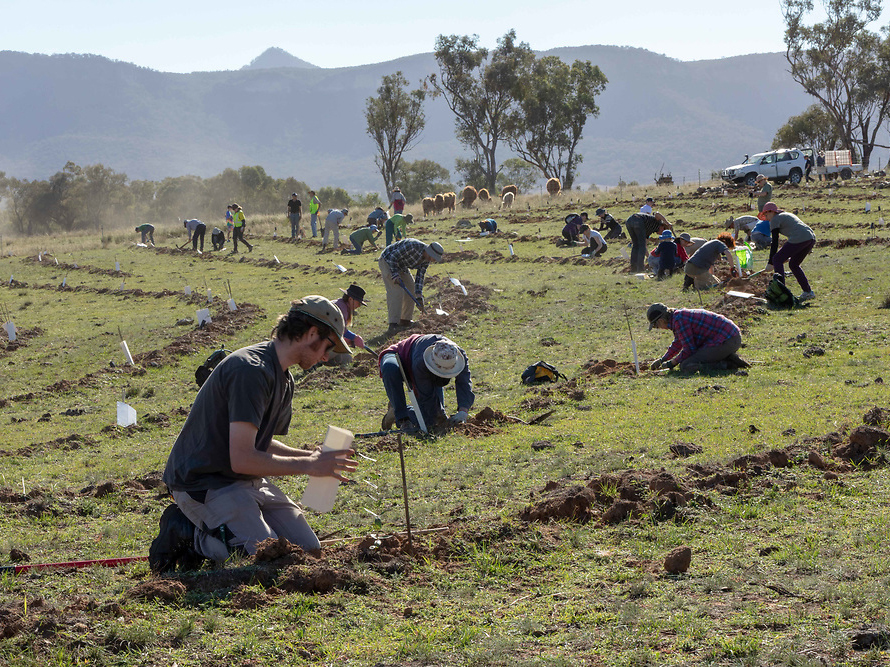Restoring the Capertee Valley

Photo credit: Virginia Beak – Little Gecko Media. Capertee Valley planting day.
To the west of Sydney lies the Capertee Valley, isolated and slumbering, far from urban existence. Twice a year, Kathryn Read and her son drive out to this vast and ancient landscape, to get their hands dirty and plant hundreds of trees.
Over the years, they’ve seen the cleared landscape slowly blossom with trees that once began as tiny saplings.
For Kathryn, the experience is restorative.
“Replanting the habitat works its own magic on me. There is an interconnectedness and a hopefulness to planting trees that reminds me of Jean Giono’s ‘The man who planted trees’, Kate said.
“On returning to a previously barren landscape, Giono finds a restored landscape following the tree planting efforts of a single man.
“I like to think of my boy in decades to come, taking his children and grandchildren to see the groves that we planted.”
Kathryn’s story is one of many from The Rescue Project – a website where stories of connection and environment can be shared. The site has been developed in partnership with Landcare Australia and former ABC Radio documentary maker, storyteller and PhD student Gretchen Miller.
In her research, Gretchen is exploring the power of citizen storytelling in environmental communication.
“In the act of environmental rescue we nurture a tree through drought or restore a place or native animal to health. But this is not a one-way encounter,” Gretchen said.
“In rescuing we too receive something in return. In the act of giving back, there is a quiet emotion we might feel that nourishes ourselves and sometimes whole communities.”
It is these positive feelings of rescue that Gretchen is particularly intrigued by.
“We know that bad environmental news stories have an alienating effect. They make for burnout and compassion fatigue,” she said.
“By sharing positive stories about connecting with our environment The Rescue Project aims to inspire and encourage others especially those who may not be environmentally active or concerned, but who live and work in a close relationship with the natural environment, such as farmers and small town communities.”
Do you or your Landcare group have an environmental rescue story like Kathryn’s? We’d love to hear it. Share your story here.
Read more of Kathryn’s story here.



